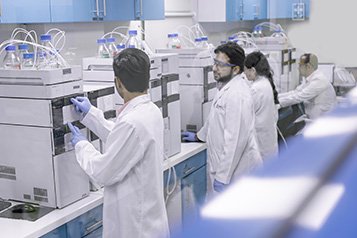

Discussion forum for Pharma Quality events, Regulatory Actions
Warning letters, 483s, Recalls, Import Alerts, Audit observations

Warning letters, 483s, Recalls, Import Alerts, Audit observations





USFDA 483 to Sunpharma, Mohali unit in Aug 2022 cites deficiencies in Chromatographic integration and saving of chromatograms, handling of microbiology media plates, characterization and control measures for microbials based on environmental isolates, implementation and control of Reduced Testing of materials.
The USFDA483 show regulatory and auditor expectations on Laboratory compliance, control on Chromatography integrations is increasing. Not only conventional “manual integration” but system integrations performed by altering integration events for different chromatograms need to be controlled, reviewed and justified. When environmental isolates are identified, follow it up with an evaluation of potential sources and assessment of current control measures and any additional actions to be taken. Reduced testing procedures help in improving efficiencies, but should be implemented with checks and balances to avoid product failures and deviations. USFDA 483
Observation 4
Laboratory records are deficient in that they do not include a complete record of all data obtained during testing.
When an analyst processing chromatography data determines the existing processing method is not appropriate or chooses to use a different processing method the original chromatogram is not saved. Analyst document that the integration was inappropriate and get approval for different processing method, but the original chromatogram is not saved.
Observation 5
Laboratory controls do not include the establishment of scientifically sound and appropriate test procedures designed to assure that drug products conform to appropriate standards of identity, strength, quality and purity.
Observation 6
Written procedures are not followed for the testing of components.
Reduced testing procedure was adopted for an API, though there were OOS for Particle size of the material and the Reduced testing procedure require confirmed OOS to be considered while adopting reduced testing procedure. Further there were finished product OOS for dissolution and root cause was attributed to fines / particle size of the API. However, the approved reduced testing for particle size distribution in API was not reevaluated as described in Reduced Testing procedure.
Observation 4
Laboratory records are deficient in that they do not include a complete record of all data obtained during testing.
When an analyst processing chromatography data determines the existing processing method is not appropriate or chooses to use a different processing method the original chromatogram is not saved. Analyst document that the integration was inappropriate and get approval for different processing method, but the original chromatogram is not saved.
Observation 5
Laboratory controls do not include the establishment of scientifically sound and appropriate test procedures designed to assure that drug products conform to appropriate standards of identity, strength, quality and purity.
Observation 6
Written procedures are not followed for the testing of components.
Reduced testing procedure was adopted for an API, though there were OOS for Particle size of the material and the Reduced testing procedure require confirmed OOS to be considered while adopting reduced testing procedure. Further there were finished product OOS for dissolution and root cause was attributed to fines / particle size of the API. However, the approved reduced testing for particle size distribution in API was not reevaluated as described in Reduced Testing procedure.
Leave a Comment
You must be logged in to post a comment.